In the Last Blog Post
In the last blog post, A Surprising End to a Bok Tower Gardens Morning Photo Walk here, my favorite flower image was Image #3 for the sharp purple tip of the disc florets and the lovely defocused petals and the sweet background. My favorite owl photo was Image #6 for the sharpness and the curious pose.
From the My New Lady Friend — I’ll Never See Her Again! Blog Post Here
Thanks Matthew!
The breadth of knowledge and skills of the folks who visit the blog regularly continues to amaze me. And so does their willingness to share so freely. Huge thanks to Matthew Milnes not only for helping me identify the big lady turtle, but for sharing his extensive knowledge of turtle natural history with me. Matt, married with two little one — 7 and 11 years old, lives in Milledgeville, GA where he is a biology professor at Georgia College. He grew up in Clearwater, Florida (not far from Fort DeSoto) and has spent his career studying the physiology of reptiles.
Years ago, he took a few trips to places like Merritt Island NWR and the Outer Banks. From those outings morphed a desire to photograph wading birds, waterfowl, and shorebirds. (Does that sound familiar?) In a typical year he makes two or three coastal trips to photograph birds to places somewhat connected to his job. He does, however, while doing field work for his job, have lots of chances to photograph snakes, lizards, frogs, and salamanders.
From Matt I learned that the Peninsular Cooter in question, was nesting very early and that the rates of embryonic development in reptiles are temperature-dependent. There is, therefore, usually a broad range of incubation periods. I learned that the range of incubation time for this species is from 60-150 days — about 60 days would be for eggs laid in the summer, and probably close to 150 days for eggs laid in December. And I learned that some hatchlings of this species are known to overwinter in the nest if they hatch in late fall! Based on his prior experience incubating turtle eggs, the time of year, and my location, Matt guesstimated that the eggs would hatch in 3-4 months.
In-the-Field at Fort DeSoto with Matt Milnes
After accidentally running into Matt at DeSoto on Wednesday morning past, he booked an In-the-Field session for the next morning. We both lucked out as we actually had some birds. Using his hand held Nikon NIKKOR Z 800mm f/6.3 VR S lens with a Nikon Z9 Mirrorless Camera, Matt made many excellent images. He sent me this e-mail on Friday:
Dear Artie,
I want to thank you again for another great round of instruction. I regularly read your blog, and learn a lot doing so, but there’s no substitute for being by your side in the field. What I found particularly helpful during our most recent morning session was seeing how you approach a single bird or a mixed flock of birds under different environmental conditions. I also picked up helpful tips about when to shoot from a low vs high perspective based on surroundings and the activity of the birds. The photo review over brunch will help me cull images more efficiently and critically review my own work. Lastly, and maybe most importantly, I had fun shooting with you and made some images that make me happy.
All the best,
Matt
Once we sat down for brunch at Skyway Jack’s Restaurant in St. Pete and I began downloading his images to my laptop for an image review session, it took me all of 20 seconds to realize that Matt was a darned good bird photographer.
|
|
|
This image was created by BAA-friend and IPT veteran Matthew Milnes on a 29 May 2025 In-the-Field Morning at Fort DeSoto Park, Tierra Verde, FL. Standing at full height he used the hand held Nikon NIKKOR Z 800mm f/6.3 VR S Lens (Nikon Z) with the top of the line Nikon Z9 Mirrorless Camera. ISO 1600: 1/2000 second at f/6.3 (wide open) in Manual mode. AWB at 7:26:50am on still, sunny morning with some moisture in the air. Image #1: Dunlin in breeding plumage foraging |
Lesson #1
On still mornings with mirror-like reflections, standing at full height can be better than getting low. A further advantage is that you will get to make some images before possibly scaring the subject away as you get on the ground.
|
|
|
This image was also created by BAA-friend and IPT veteran Matthew Milnes on a 29 May 2025 In-the-Field Morning at Fort DeSoto Park, Tierra Verde, FL. Seated on damp mud, he used the knee-pod technique with the hand held Nikon NIKKOR Z 800mm f/6.3 VR S Lens (Nikon Z) with the top of the line Nikon Z9 Mirrorless Camera. ISO 2000: 1/1600 second at f/6.3 (wide open) in Manual mode. AWB at 7:34:27am on still, sunny morning with just a bit of moisture in the air. Image #2: Dunlin in breeding plumage with tiny invertebrate in bill |
Lesson #2
When photographing foraging shorebirds, acquire focus when the bird is roughly parallel to the imaging sensor and fire away; if you wait for things to be perfect, you will miss the shot and come up completely empty.
|
|
|
This image was also created by BAA-friend and IPT veteran Matthew Milnes on a 29 May 2025 In-the-Field Morning at Fort DeSoto Park, Tierra Verde, FL. Seated on damp sand, he used the knee-pod technique with the hand held Nikon NIKKOR Z 800mm f/6.3 VR S Lens (Nikon Z) with the top of the line Nikon Z9 Mirrorless Camera. ISO 800: 1/3200 second at f/6.3 (wide open) in Manual mode. AWB at 8:02:55am on then sunny morning with just a bit of moisture in the air. Image #3: Red Knot in surf |
Lessons #3 & 3A
Watch the breaking wavelets. Strive to place the line of the wave either above the bird or at its feet. Best case: water only with no sign of a wave.
The best head angle almost often has the bird facing 1-3 degrees toward us.
|
|
|
This image was also created by BAA-friend and IPT veteran Matthew Milnes on a 29 May 2025 In-the-Field Morning at Fort DeSoto Park, Tierra Verde, FL. Seated on damp sand, he used the knee-pod technique with the hand held Nikon NIKKOR Z 800mm f/6.3 VR S Lens (Nikon Z) with the top of the line Nikon Z9 Mirrorless Camera. ISO 640: 1/4000 second at f/6.3 (wide open) in Manual mode. AWB at 8:11:45am on then sunny morning with just a hint of moisture in the air. Image #4: White Ibis with Mole Crab in bill |
Lesson #4
When a bird is feeding with its long bill in the sand or the water, press the shutter button as it emerges. Note that applying lessons #1, 2, and 3 also worked well for Image #4. Matt had several stunners in what was a short sequence.
|
|
|
This image was also created by BAA-friend and IPT veteran Matthew Milnes on a 29 May 2025 In-the-Field Morning at Fort DeSoto Park, Tierra Verde, FL. Seated in ten inches of saltwater, he used the hand held Nikon NIKKOR Z 800mm f/6.3 VR S Lens (Nikon Z) with the top of the line Nikon Z9 Mirrorless Camera. ISO 500: 1/4000 second at f/6.3 (wide open) in Manual mode. AWB at 8:36:43am on then sunny morning with just a bit of moisture in the air. Image #5: Black Skimmer, breeding plumage adult — tight flight crop |
Lessons #5 & 5A
Be aggressive when shooting flight. Once you acquire focus, press the shutter button and keep it pressed even if you know the images are mis-framed you never know what a creative crop can do.
When photographing terns and gulls and skimmers flying in to land on a beach or a spit with the sun and the wind behind you, sitting in the water to shoot flight effectively moves the background farther from the subject than it would be if you were standing. Note; Matt’s skimmer was a fly-by. Kudos to him for getting on the bird; I tried and failed.
A Quick Comparison
The Nikon Z 800 Z weighs 5.2 lbs., focuses down to 16′ 4″, costs $6496.95, features a constant wide aperture of f/6.3, and a single focal length: 800mm.
Th Sony 400-800 G lens weighs 5.45 lbs., has an MFD of 11′ 5″ at 800mm, costs $3298.00, and, at f/8, is 2/3 stop slower than the Nikon Z 800, and is far more versatile with its 400 to 800mm focal length range.
Both lenses are exceedingly sharp and can be hand held by most but not all folks. In hands of a competent photographer, both of these technological marvels are more than up to the task of making high quality photographs.
Typos
With all blog posts, feel free to e-mail or to leave a comment regarding any typos or errors.


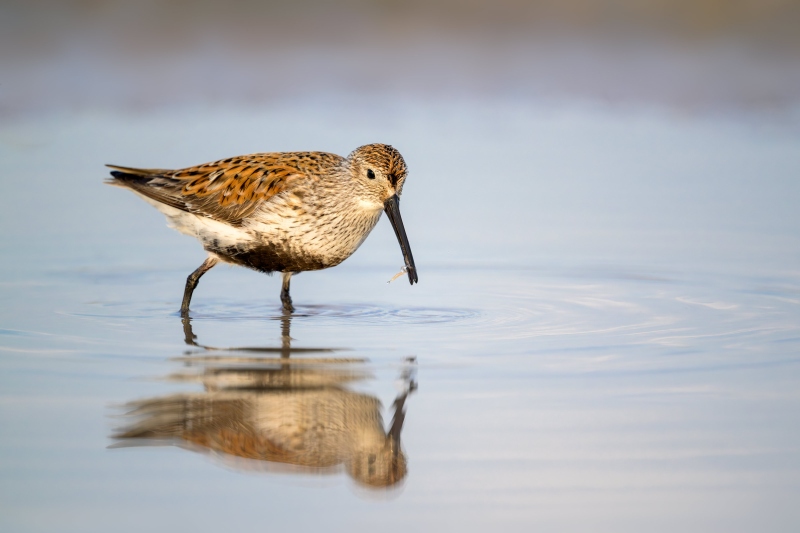
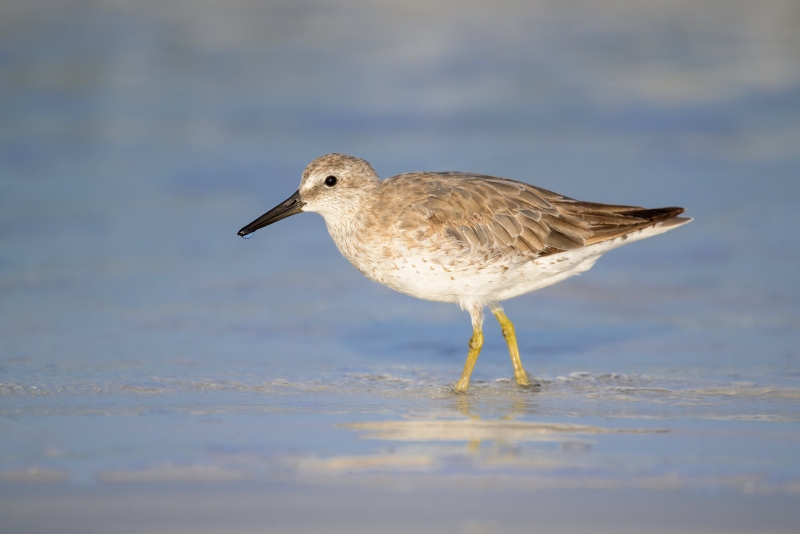
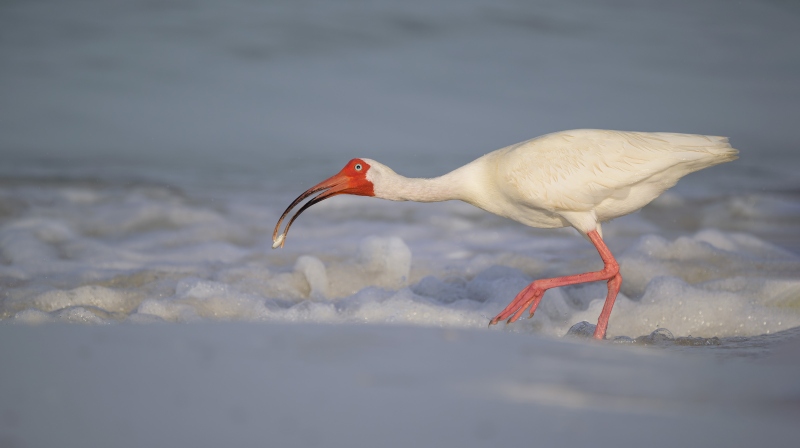
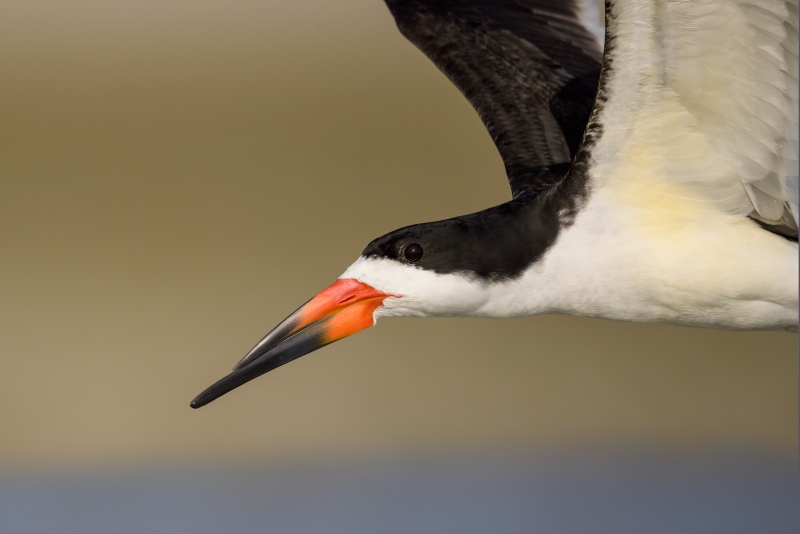






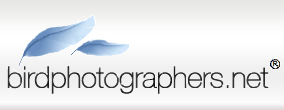


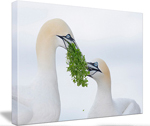



Especially like the surf and raised head of the White Ibis and the unusual flight closeup of the skimmer. Good lessons too. On aggressive flight and action shooting, i.e., “you never know what a creative crop can do,” I’d add that now you never know what a generative crop or generative fill might do.
Thanks, Cliff. I love the ibis too for lots of reasons. I will never know what a generative crop or generative fill might do because I do not use either of them 🙂
much love, a
Just another way to add canvas, create missing wingtips, etc. Tried it maybe two weeks ago (not even using the latest version of PS), and it worked surprisingly well.
Great shots and very usable tips. Thanks to both Matt and Art for sharing and teaching.
Thank you sir. It’s good to know at least one person saw this post. Therefore, much appreciated. and much love, artie